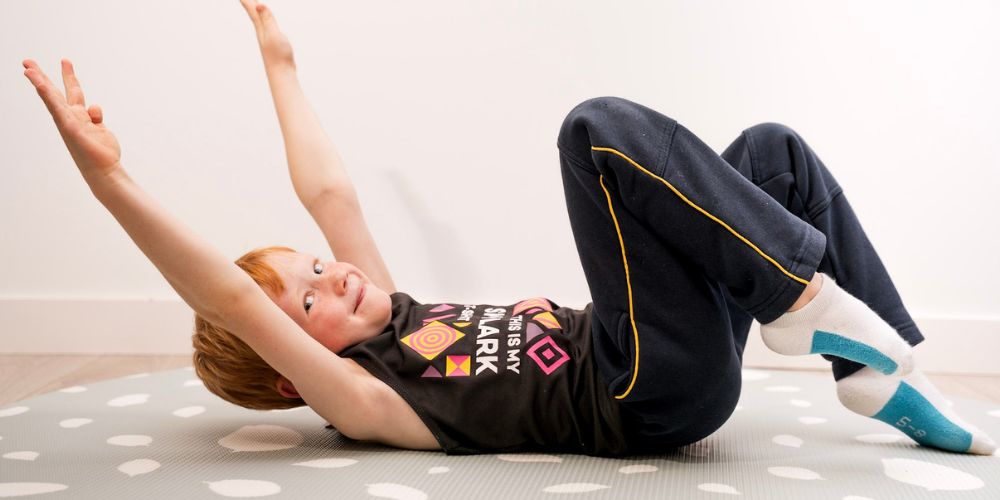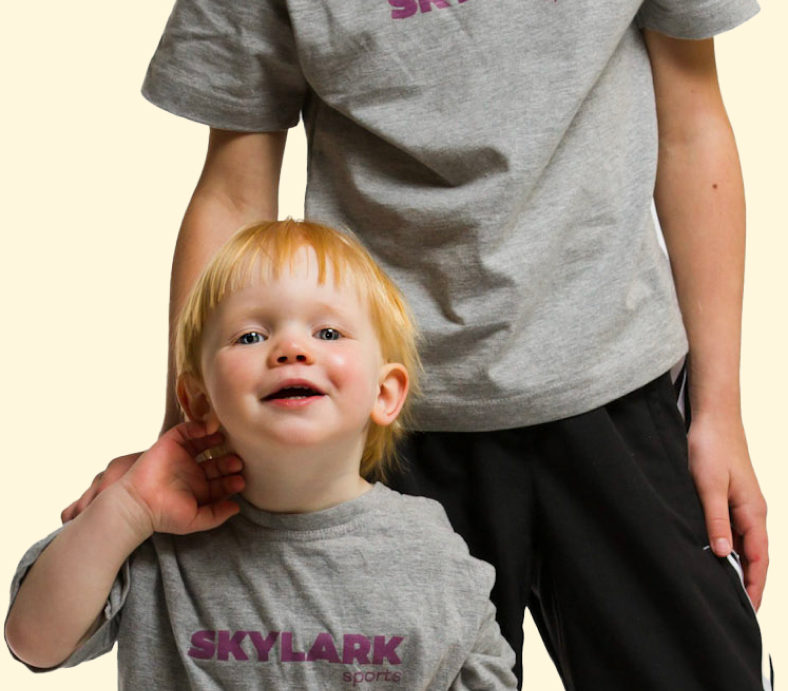Hey there, aspiring tumblers and curious souls! If you've ever marvelled at the awe-inspiring flips and twists of gymnasts or cheerleaders and thought, "I wish I could do that," you're in for an exhilarating ride. Welcome to the fascinating tumbling world, where gravity meets grace and determination meets daring.
Fundamentally, tumbling is a captivating fusion of athleticism and artistic expression in which participants defy gravity and execute amazing somersaults, cartwheels, and handsprings with almost effortless ease. The best way for beginners to start tumbling is by embracing the fundamental building blocks of this captivating art form.
If you're here, it means you've taken the exciting plunge into the world of tumbling. Whether you're a parent looking for guidance for your little one or an adventurous adult seeking a new hobby, you're in the right place!
Hear our guide that we compiled based on our experience within the gym on how we help all enthusiasts start their tumbling journey!
What is Basic Tumbling?
Basic tumbling is where every tumbling journey begins. It's like learning to walk before you can run – mastering these moves gives you the confidence and skills to tackle more advanced acrobatics.
Consider it the building blocks of acrobatics, the skills necessary to perform all the amazing twists and flips you've always wanted to learn.
We are referring to the traditional and cheering routines you have most likely seen. The mainstays of a tumbling class are cartwheels, handstands, and somersaults. Despite their apparent simplicity, these movements resemble the building blocks of a tall tower. The entire construction could collapse in the absence of a strong foundation.

Fundamentals of Tumbling
You see, in my years of teaching tumbling routines, I've learned that everything – I mean everything – boils down to nailing those fundamentals. It's like cooking a perfect meal – you need the right ingredients and techniques. Tumbling is no different. We're talking about the ABCs, the building blocks, the essential moves that lay the groundwork for jaw-dropping flips and twists.
Cartwheels
It's like the gateway into the world of tumbling. I've seen several beginners fall, wobble and then nail that perfect cartwheel with a little practise. It's all about finding your rhythm, your legs' push, and your arms' grace. Once you've mastered that, believe me, you're on the right course.
Handstands
Imagine a room full of enthusiastic kids, each attempting to balance upside down on their hands. It's a sight to see! Handstands teach you control, strength, and concentration. Sure, it may appear difficult at first, but with a little help, you'll be standing tall on your hands, defying gravity like a pro in no time.
Somersaults
And, of course, who could forget the somersaults? There's a certain thrill in tucking your body into a ball and rolling forward. It's like a mini-adventure every time! Mastering somersaults isn't just about physical strength; it's about conquering your fears, embracing the roll, and landing confidently.
But let me tell you a secret – even the most seasoned gymnasts started with these basic moves. It's not about how fancy your routine looks; it's about how well you've mastered the fundamentals. These moves are the backbone of every advanced flip, twist, and turn you'll ever learn.
How to Tumble for Beginners Step by Step
Now, I can almost feel your excitement bubbling up – you're ready to get down to business! Let's break down the process of learning how to tumble into easy-to-follow steps:
Step 1: Warm Up and Stretch
First and foremost, let's get those muscles warmed up! Imagine your body to be a rubber band that needs to be gently stretched before it can flex and bend without snapping. Spend 10-15 minutes performing light aerobic workouts such as running in place or jumping jacks. After that, stretch your arms, legs, back, and neck. Stretching avoids injuries and increases flexibility, making those tumbles smoother and easier.
Step 2: Master the Basics
Start small and build your way up. Begin with perfecting the art of a cartwheel. Place your hands on the ground, kick your legs over your body, and voila – you've just performed a cartwheel! Practice this move until you're as confident as a cat gracefully landing on its feet.
Step 3: Channel Your Inner Acrobat
It's time to level up once you've mastered cartwheels. To ensure balance, practise handstands against a wall or with a spotter. Remember, it's all about finding your centre of gravity and maintaining your confidence.
Step 4: Perform Somersaults
It's time to spice things up with somersaults! Begin by squatting and rolling your body into a ball. Roll forward, allowing your momentum to propel you into a somersault. Keep your chin tucked to your chest and your knees tight as you roll. It may feel like a tiny rollercoaster ride, but that's part of the fun!
Step 5: Practise, Practise, Practise
The golden rule of tumbling is that practise makes perfect. Make time for regular practise, and don't be disheartened if you fall or wobble. Every misstep, every mistake is a stepping stone to your success. Continue to be persistent, patient, and, most importantly, passionate. You will get more confident and skilful as you practise.
Common Mistakes Beginners Make When Tumbling
As a seasoned gymnastics instructor, I've seen my fair share of common mistakes that beginners make when diving into tumbling. Let me shed some light on these blunders so you can sidestep them on your tumbling journey:
Mistake No. 1: Ignoring the Warm-Up
I understand that you can't wait to begin rolling and flipping. But here's the deal: skipping warm-ups is a big no-no. Cold muscles are more likely to snap. Spend some time warming up and stretching to get your body ready.
Mistake 2: Rushing Through the Basics
Cartwheels, handstands, and somersaults are your best tumbling companions. One of the most common errors beginners make is speeding through these fundamental moves. It takes time and patience to achieve mastery. Don't rush to the more advanced material. The stronger your foundation, the more confident you'll tackle those tough flips.
Mistake 3: Fear of Tumbling
Ah, the fear factor – it's a common hurdle. Fear of falling is normal; no one enjoys a sudden meeting with the ground. The reality is that falling is an essential part of learning to tumble. It's acceptable to trip and to lose your balance. Every fall is a disguised lesson. Accept, grow from, and apply it to your technique to improve it. You'll be tumbling with confidence and elegance soon enough.
Mistake 4: Poor Body Alignment
Imagine your body is a perfectly straight pencil – the alignment you should aim for. Beginners often make the mistake of arching their backs or bending their arms during moves like handstands. Maintaining proper body alignment is crucial for balance and stability. Pay attention to your form, and your tumbling skills will soar.
Mistake 5: Lack of Confidence
In tumbling, confidence is your secret weapon. Have faith in yourself and your ability. It would be best to improve your abilities in the middle of a tumble to put you on balance. Believe in the process, your training, and, most importantly, yourself. Confidence can change a shaky handstand into a solid one and a shaky somersault into a flawless roll.
Frequently Asked Questions
How can I improve my balance for tumbling?
Tumbling success is dependent on balance. Simple activities such as standing on one foot or completing yoga poses focusing on stability are excellent ways to improve your balance. Incorporating balancing boards or stability balls into your routine will also enhance your overall balance and core strength, which are necessary for tumbling.
What should I wear to tumbling practise?
Tumbling requires a high level of comfort. Choose sports clothing that fits snugly and facilitates movement, like leggings or shorts worn with a loose-fitting t-shirt. Wear breathable and moisture-wicking apparel to stay cool and dry during practise. Most tumblers prefer to practise barefoot to keep a strong grip on the floor. If you prefer shoes, choose lightweight, flexible trainers with non-marking bottoms to protect your tumbling safety.
Is there anything I can do at home to improve my tumbling abilities?
You may do numerous activities at home to improve your tumbling skills. Focus on bodyweight exercises such as squats, lunges, and push-ups to improve strength. To develop your technique and confidence, practise fundamental tumbling moves like cartwheels and handstands on a soft surface like a yoga mat. Remember to stretch daily to keep your flexibility, essential for completing advanced tumbling techniques.
What should I do to get in condition for tumbling?
Getting in shape for tumbling necessitates a multifaceted approach. Improve your stamina by focusing on cardiovascular exercises such as jogging or cycling. Tumbling relies significantly on these muscle groups, so incorporate strength training workouts that target your core, arms, and legs. In this trip, bodyweight workouts, resistance bands, and light weights can be your best friends. Furthermore, remember to underestimate the power of flexibility training; regular stretching and yoga can dramatically improve your motion range, allowing you to perform more fluid and controlled tumbling movements.
Conclusion
Tumbling isn't just about learning flips; it's about unlocking your true potential and discovering the extraordinary capabilities of your body. With dedication, guidance, and a sprinkle of courage, you're well on your way to becoming a tumbling superstar.
Tumbling is not just a physical skill but a way to build your character. It teaches you to face difficulties with courage and approach opportunities with confidence. So, remember the resilience you've shown here and apply it to everything you do.
And if you crave guidance on your tumbling journey, we're just a phone call away. Better yet, please visit us at our gymnastic facilities, where our experienced trainers are ready to support you every step of the way. There's nothing quite like hands-on instruction to boost your skills and confidence. So, don't hesitate – reach out to us, and let's tumble toward success together! Your next exciting flip could be just around the corner, and we're here to help you achieve it.

